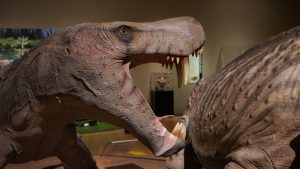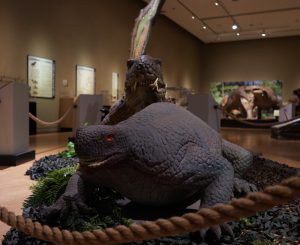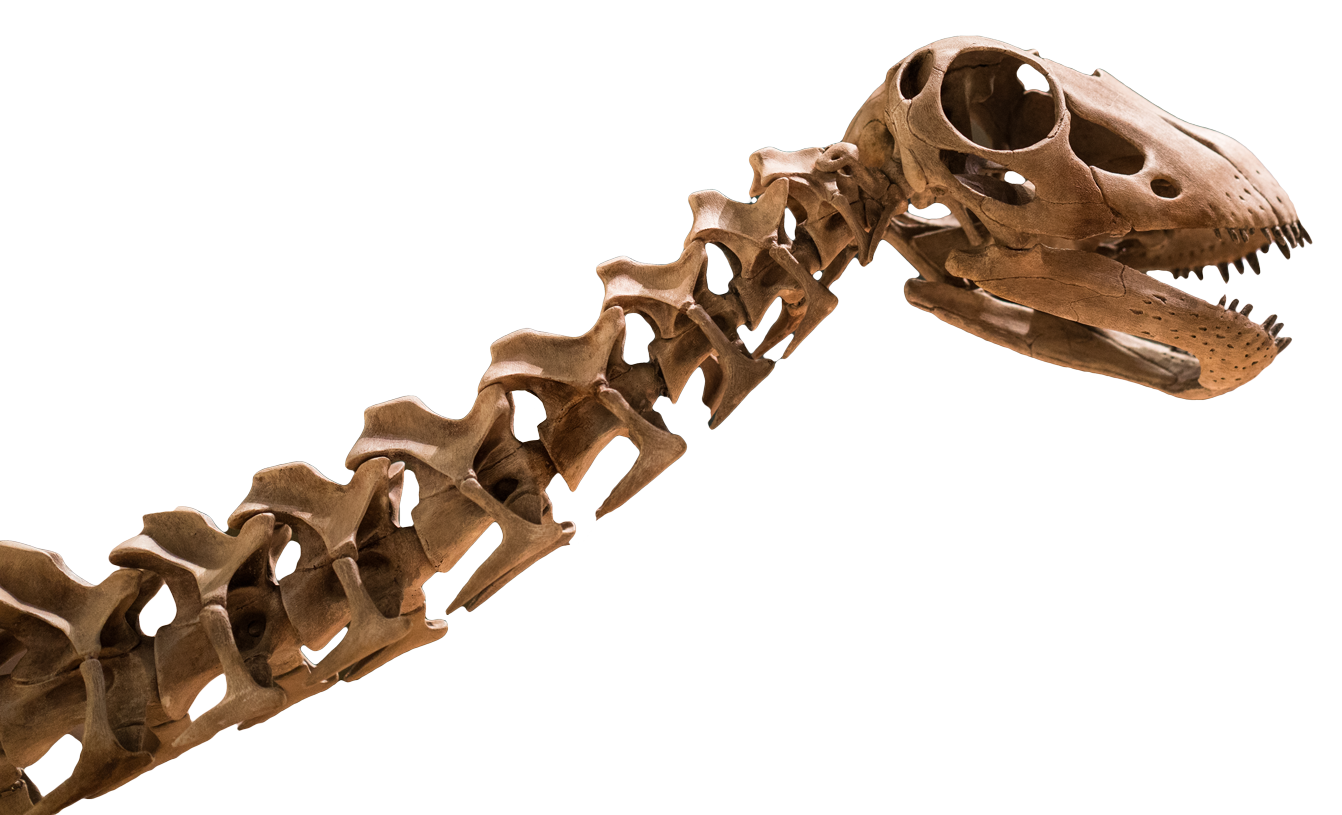Monsters have invaded Norman, and it’s not even Halloween yet.

Strange creatures with sharp teeth, mighty roars and oddly shaped heads have found a temporary home at the Sam Noble Museum in the latest traveling exhibit, Permian Monsters: Life Before the Dinosaurs.
The exhibit takes visitors back in time 250-300 million years ago, to the Permian period.
“In this exhibit, you’re going to see a large variety of very strange animals that you don’t hear about in typical textbooks,” said Kyle Davies, fossil preparator for the museum’s vertebrate paleontology department. “The Permian is a time period that is not well-illustrated. There’s usually a lot of focus on the dinosaurs, but they actually came later.”
At first glance, these creatures certainly look like they could be dinosaurs, or at the very least, related to them in some way. However, the animals alive during the Permian period are more closely related to mammals than they are dinosaurs. Dinosaurs did not roam the earth until approximately 20 million years after the Permian.
Starting in the early Permian, visitors to the exhibit will walk forward in time and learn how these animals evolved. Near the end of the exhibit, they’ll learn how the Earth said goodbye to these magnificent beasts during the Permian-Triassic extinction, or “The Great Dying.”
The extinction is attributed to the volcanic eruptions that created the Siberian Traps.
“There was a unique kind of volcanic activity called flood basalts,” explained Davies. “Instead of a localized eruption, major rifts opened in the surface of the Earth and magma flooded out, covering huge areas of terrain. The Siberian Traps geographically cover about half of Asia, to give you an idea of the extent of the eruptions.”
The series of flood basalt eruptions lasted for 1 million years and created a chain reaction of events such as acid rain, toxic ocean waters, increased build-up of greenhouse gases and a sharp rise in global temperature. All of these factors led to the loss of 75-95% of all species on the Earth, including the Permian monsters.
“It’s the largest known extinction in the history of the Earth so far,” said Davies. “It’s actually a greater extinction than the one that ended the age of dinosaurs.”
The exhibit does a great job of bringing these Permian animals back to life. Animatronic displays including head nods, blinking eyes, jaw movements and tail motions give visitors the opportunity to experience what these creatures were like hundreds of millions of years ago.
“It’s always neat and interesting to see what an animal might have looked like in real life, rather than just a skeleton in a case,” said Davies. “It gives people the chance to get a better feel for the animal, and it also challenges the minds of the people making the exhibit to make it as accurate as possible.”

The exhibit also features a fleshed-out version of a local celebrity: the Cotylorhynchus.
“Some of the fossil specimens of the Cotylorhynchus were found within the modern city limits of Norman,” said Davies. “We have multiple specimens in our vertebrate paleontology collection that were dug up in the 1930s and early 1940s.”
The Cotylorhynchus is a very odd-looking creature, with a rather large body but very small head. While it’s local to Norman, it’s not the only Permian monster to exist in Oklahoma.
“Oklahoma has extensive early Permian beds,” said Davies. “The Dimetrodon is also a well-known Permian animal from Oklahoma, as is the Diplocaulus, an amphibious creature with a boomerang-shaped head.”
While the animatronic versions of the Cotylorhynchus and Dimetrodon are only here for a short time, fossils of the two creatures, along with other Permian animals, can be found year-round in one of the museum’s permanent galleries, the Hall of Ancient Life.
Permian Monsters: Life Before the Dinosaurs will be on display at the Sam Noble Museum through Nov. 8.


